The following is based on an article that appeared in Venturist Voice #3, Winter, 1987. It originally was written in a world very different to today. Communism was still present over large parts of the planet, computers were still quite eccentric things to own, the concept of linking computers by telephone was in its infancy and only the playground of the rich or people in government positions and life insurance was virtually the only way to fund cryonic suspension. (Other methods were there, but were obscure and not easily available.) Private investment was still severely limited by taxation - avoidance was again only available to the very rich who could afford to employ legal people at ten to twenty times the average wage. My personal life was bounded by a companion who was very negative about cryonics or anything out of the ordinary.

 I was born in the middle of the Second World War and was
brought up during the period of austerity that
followed the British people's mistaken election of a Socialist
government. I'm told I was an ideal child until the age of about
three, but after then it seemed to be downhill all the way. Finally I
was sent to boarding school for ten years at the age of 8.
I was born in the middle of the Second World War and was
brought up during the period of austerity that
followed the British people's mistaken election of a Socialist
government. I'm told I was an ideal child until the age of about
three, but after then it seemed to be downhill all the way. Finally I
was sent to boarding school for ten years at the age of 8.
If I make it sound like a prison sentence it's because that's how I felt about it, though of course it was perfectly normal private education. Indeed Socialists and Communists regard it as a privilege to be stamped out. I cannot say whether day school would have suited me any better or worse -- I have not experienced it so I cannot make a sensible comparison. I still have a very low opinion of education regardless of the sleeping arrangements. It is, of course, possible that without this upbringing I would have had a more conventional adulthood and not had the time or inclination to get involved with immortalism, so it may be unwise to knock it too hard.
As a teenager I was interested in radio and became slightly obsessed with the tape loop maritime radio stations. These recordings survived and are of interest to some as these stations no longer exist.
After I left boarding school I remained living at home, and spent a year in industry followed by four years university and another period in industry. Since leaving home I've been self-employed.
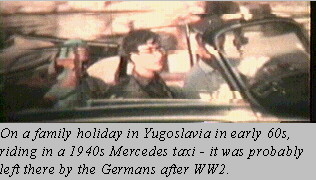 I had been aware of cryonics
right from the early days,
through articles in magazines
such as Life International and television programs
such as David Frost's interview with Bob Ettinger. I
even kept a note of the Life Extension Society's
address, but never plucked up the courage to write
them. I suppose I Just thought that such an
obviously sensible idea would sweep the world, but
of course it never happened.
I had been aware of cryonics
right from the early days,
through articles in magazines
such as Life International and television programs
such as David Frost's interview with Bob Ettinger. I
even kept a note of the Life Extension Society's
address, but never plucked up the courage to write
them. I suppose I Just thought that such an
obviously sensible idea would sweep the world, but
of course it never happened.The Cryonics Society of Great Britain advertised in New Scientist and that's what really got me involved, though that society only lasted a few months. In the writeup in Cryonics, the newsletter of Alcor, about the startup of serious cryonic activity in the UK, kind acknowledgement was
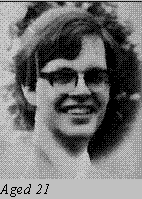 made of the fact that it was through my letters in computing magazines and other
literary activities that this group came into being. Of course it is impossible to
speculate what may have happened without my intervention, but obviously my
contribution is very small compared to what will now have to be done by others.
made of the fact that it was through my letters in computing magazines and other
literary activities that this group came into being. Of course it is impossible to
speculate what may have happened without my intervention, but obviously my
contribution is very small compared to what will now have to be done by others. When I did my first year in industry I worked for A. H. Reeves, the inventor of pulse code modulation. (This was the name then given to the process of using analog to digital conversion of companded speech for transmission down telephone lines On the receiving end the compressed signal was expanded and converted back to analog. The process reduced interference and made better use of the facilities. It is now also used in optical communication along glass fibres as well as for digital TV and radio, CDs and mobile telephones.)
During the time I spent in boarding schools, religion was, of course, taught as though it was fact, and I became a member of the Church of England. Reeves was also interested in ESP, and we used to discuss matters relating to this and religion. By this time I had become very suspicious of the concept of a benevolent God, and although Reeves did believe in God, his ideas were very different from those I had been taught. I rapidly became an antitheist and left the Church of England. (An antitheist is someone who believes in God, but is opposed to his methods -- I believe the term was coined by H. G. Wells.) Certainly my present views are governed by rationality rather than rebound, but I still feel little sympathy for a being that deliberately designs a life/death/birth system. Of course if there is a God he may not be like that at all. He may not be omnipotent in the sense supposed by conventional thought.
Reeves told me about experiments he had done where spirits had guided ball bearings he had catapulted electromagnetically from one side of the room to the other. The balls were covered in ink, and the spirits guided them so that when they landed they formed patterns which were maps of countries. There is an Active X model of another of his experiments here.
Later his department was closed down and I bought out the equipment and set up a small company with him to sell his skills in telecommunications to the British Post Office, who at that time held the government monopoly on all telecommunications in the UK. It was at this time I left my parents home and lived in a flat over the laboratories. I think with hindsight I would have been better off leaving home earlier, but I was reluctant to do this, probably because of the time I did at boarding school, which made it seem that such a move would lead to a diminution in freedom.
But Reeves was over 65, and perished before the new laboratories were finished and before he completed even one contract, working from home. He died still firmly believing in ESP, and whether he would have considered cryonics I don't know. At that time I had only just heard of it, and did not discuss it with him because of the cost. With hindsight, it may have been possible to raise the money, and of course with someone like that supporting cryonics things might have been a whole lot different.
After Reeves' death I saw the supposed "maps" drawn by spirits using ball bearings. It was a case of acute self-deception by the desperately gullible.
I had not taken kindly to the stresses of commuting and employment so when Reeves had died, rather than returning to employment I just ran the firm, which still exists, and I operate it in a low-key manner making money at various small projects. I refuse to get tied down for long on any one thing. But maybe that way one day I'll find something really profitable.
I like to remain in control, and I have achieved this to some extent. A lot of my income comes from manipulating investments rather than anything really creative. "Reeves Telecommunications Laboratories" enabled me to break out of the conventional life I may have otherwise lived as a research engineer in a big company, not even seeing the light of day at my home for over half the year.
I became involved for a short time with a phenomenon known as Raudive Voices, whereby the voices of dead people were supposed to manifest themselves on tape recorders. I provided expert opinion, as an electronics engineer, to the writer of a book on the subject. I stated how the voices could have been caused by radio interference with a tape recorder's circuitry. I still did the experiments, though, hoping there might be something in it, but the nearer I got to the facts behind the sensationalism the clearer it was that there is nothing in ESP.
I sold the business premises in Essex and moved to Cornwall, where the environment is delightful and local taxes are low. I have since dabbled in many things, and seem to have reached a reasonable balance with the rest of the world. I don't travel well and have never had the wanderlust. I am quite happy to remain here for the foreseeable future. (Through the media available in today's world that's not as restricting as it may seem.)
That brings me up to the time I linked my interest in computers with cryonics. If asked to state one personal characteristic that draws me to cryonics, I would say it is a desire to be in control. I think this has probably governed most of the decisions I've made. It does pose some problems because the funding options then available for cryonics required some surrender of control.
The Duchy of Cornwall has a large proportion of newly-retired people, with substantial investments, in its population. This is witnessed by the growth of financial services in the area. In addition it attracts individualists. Visit any museum or theme park in the area, and exhibits abound of eccentrics, and (with hindsight) not-so-eccentric inventions, such as steam engines and gas lighting.
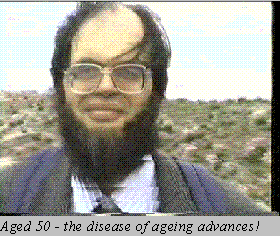 It would not be hard to imagine several hundred potential
suspension members living in the Duchy, but contacting
them poses a number of serious problems. It could take
many years between the time someone first hears about
cryonics and when they want to get involved. It should be
possible to present written material to the public that
introduces the idea without making them feel they are
being exhorted to sign up 'or else'
It would not be hard to imagine several hundred potential
suspension members living in the Duchy, but contacting
them poses a number of serious problems. It could take
many years between the time someone first hears about
cryonics and when they want to get involved. It should be
possible to present written material to the public that
introduces the idea without making them feel they are
being exhorted to sign up 'or else' I would like to be able to continue my activities and cause people to come forward and join cryonics in Cornwall. However there was a very large obstacle to this ambition. Until the late 1990s my attempts to go beyond the specialist press have not met with any success. Also any public ridicule resulting from ineffective local publication could prove embarrassing for my companion from the early 1970 to the early 1990s, Karen Griffin. My writing style does not lend itself to the popular press.
An article on Drexler's book Engines of Creation and describing the scanning tunnelling microscope was described abusively by Karen as the ravings of a madman even though it didn't mention cryonics. (Apparently the Nobel committee didn't think the subject matter so negligible when giving Binnig and Rohrer their accolade. Now, in the 21st century there are few people that have not heard of nanotechnology, and governments invest large sums in it.) Ideally such material had to go into the specialist press. However such magazines are not concentrated on a particular area. Although they are usually starved of written material, local publications were a hard nut to crack.
Nearly ten years later, the world is a very different place. Communism has gone, and areas it had stifled have erupted into a strange parody of the free market system. It is almost as if the inhabitants are acting out a street theatre of what communist propaganda had saida market economy would be like. Taxation has changed, allowing (in the UK) a limited but reasonable chunk of investments to be placed into PEPs free of gains and income taxation. Similar schemes no doubt exist in other countries. Many companies privately owned by governments in areas such as telecommunications and power generation are now public limited companies, with their stock prices quoted in an open market and subject to price competition for their services. As a result in major falls in telephone costs, the Internet has become available to virtually anybody and a vital link to those with minority interests such as cryopreservation, life extension and immortalism. The cryonics organisations are now allowing many and varied ways of funding, even post mortem funding.
As a result of persistence over many years with the publication of Longevity Report (which I personally subsidised) and several years of monthly articles in Funeral Service Journal (a publication that reached 60% of UK funeral directors) I took a part in causing Life Extension Mix and similar products to be available for sale in the UK and for the Cryonics Institute to be represented by a leading form of London funeral directors, F.A. Albin and Son. They have now manufactured several transport caskets and they offer a cryonic service to the UK and Europe in conjunction with the Cryonics Institute. A private plane is available to fly Albin personnel trained in the Cryonics Institute's procedures to the site of any deanimation, and the patient is prepared and shipped to Michigan in the best possible condition. In addition Alcor have established a UK site in Sussex where they have facilities to prepare patients for shipment to the USA for neuropreservation or whole body as required. They said that the articles in Funeral Service Journal helped gain them a professional relationship with undertakers involved.
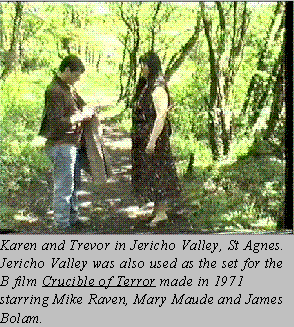 My personal life took a turn for the better when Karen
decided she would go out on her own in the evening to
listen to pub music. I let nature take its course, and soon
Trevor appeared and I was off the hook. I realised that
the universe is not created so that everyone has a partner
"meant for them", and some action was required (just as
action is required to avoid death). I started PICS -
Perpetual Immortalist Contact Sheet - with a view to
finding a female companion who was also into
immortalism. As it happened four men joined and no
women, despite spending hundreds of dollars in
advertising in Omni Longevity. I also started a singles
listing service for people living in Cornwall, which was
more successful, although it did not
find me a companion. (It eventually closed under pressure of the now ubiquitous "instant" telephone dating systems.) As well as this I used existing
services, and as a result met Chrissie Loveday whom I married at Camborne registry office on 31 May 1996,
after living together four years. Cryonics was an
important reason to get married, as she had also joined
as a suspension member of the Cryonics Institute. In the
UK, marriage provides some control over what happens to a deceased's remains and also taxation
advantages if one of the couple dies. Chrissie is a college lecturer working on the training of special needs
personnel and an excellent communicator. If cryonics works for her then she will be an excellent team
member or even the leader of a rehabilitation centre to introduce patients to life decades or even centuries
in the future.
My personal life took a turn for the better when Karen
decided she would go out on her own in the evening to
listen to pub music. I let nature take its course, and soon
Trevor appeared and I was off the hook. I realised that
the universe is not created so that everyone has a partner
"meant for them", and some action was required (just as
action is required to avoid death). I started PICS -
Perpetual Immortalist Contact Sheet - with a view to
finding a female companion who was also into
immortalism. As it happened four men joined and no
women, despite spending hundreds of dollars in
advertising in Omni Longevity. I also started a singles
listing service for people living in Cornwall, which was
more successful, although it did not
find me a companion. (It eventually closed under pressure of the now ubiquitous "instant" telephone dating systems.) As well as this I used existing
services, and as a result met Chrissie Loveday whom I married at Camborne registry office on 31 May 1996,
after living together four years. Cryonics was an
important reason to get married, as she had also joined
as a suspension member of the Cryonics Institute. In the
UK, marriage provides some control over what happens to a deceased's remains and also taxation
advantages if one of the couple dies. Chrissie is a college lecturer working on the training of special needs
personnel and an excellent communicator. If cryonics works for her then she will be an excellent team
member or even the leader of a rehabilitation centre to introduce patients to life decades or even centuries
in the future. 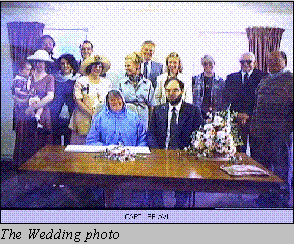 Being more outgoing than I am, and being willing to
travel (which I am not), Chrissie has been an ambassador
for the Cryonics Institute in the UK. She has appeared
on West Country television and radio, talking on the
subject and been interviewed by magazines and
newspapers. In 2001 she was appointed to the Chair of Cryonics Europe. In 2002 she fronted a major publicity campaign by New Scientist magazine who ran a competition offering a free fully paid cryopreservation membership of the Cryonics Institute. Many of her broadcasts and interviews can be found on the Cryonics Europe web site.
Being more outgoing than I am, and being willing to
travel (which I am not), Chrissie has been an ambassador
for the Cryonics Institute in the UK. She has appeared
on West Country television and radio, talking on the
subject and been interviewed by magazines and
newspapers. In 2001 she was appointed to the Chair of Cryonics Europe. In 2002 she fronted a major publicity campaign by New Scientist magazine who ran a competition offering a free fully paid cryopreservation membership of the Cryonics Institute. Many of her broadcasts and interviews can be found on the Cryonics Europe web site.However we have still not managed to get any other people in our local area seriously interested in cryonics. Something like the New Scientist competition, only run by a newspaper local to Cornwall, may be the answer, although many would not agree. For cryonics to work, there will have to be enormous advances in technology. Over the decades, money invested in technology will grow far more than the expectation of financial professionals. Intel, for example, exceed the dreams of the alchemists. They turn something cheaper than lead (sand) into something worth more than its weight in gold (Pentium chips). At the time of writing all their factories are running on full capacity and still cannot satisfy the market. Microsoft, using object linked programming, have turned the scientific method of "standing on the shoulders of giants" to produce products of ever increasing complexity. The pharmaceutical companies can use computer technology to screen for new products thousands of times faster than in bygone days. Therefore money, lots of it, can be made from technology investment. It is therefore hoped that it may be possible to fund such a cryonics competition this way sometime in the future.
The Cryonics Europe group have taken to holding an annual conference here at our home every year on the first weekend of September. The first one was in 2001 when it attracted mnore people than any other cyronics gathering outside of the USA. Without Chrissie's organisation and catering skills this would never have been possible. Reports of these events can be found here.
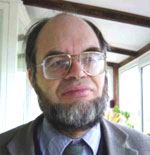 In September 2000 I was appointed to the board of directors of the Cryonics Institute, even after pointing out that I would only be a "virtual director" using email as my means of communication. As ever, such ideas, first proposed by A.H. Reeves nearly half a century earlier, are now becomming more commonplace.
In September 2000 I was appointed to the board of directors of the Cryonics Institute, even after pointing out that I would only be a "virtual director" using email as my means of communication. As ever, such ideas, first proposed by A.H. Reeves nearly half a century earlier, are now becomming more commonplace.So I finish almost as I did over ten years ago - with the aim to get local people involved still unfulfilled, and a question mark over whether my idea of the competition would work. But the technological progress the world has made around me in these ten years has been amazing. The idea of conferences here, and a magazine of the standing of New Scientist holding a competition with cryonics as a theme would have seemed unthinkable in the 1980s. What will the next decade bring?
